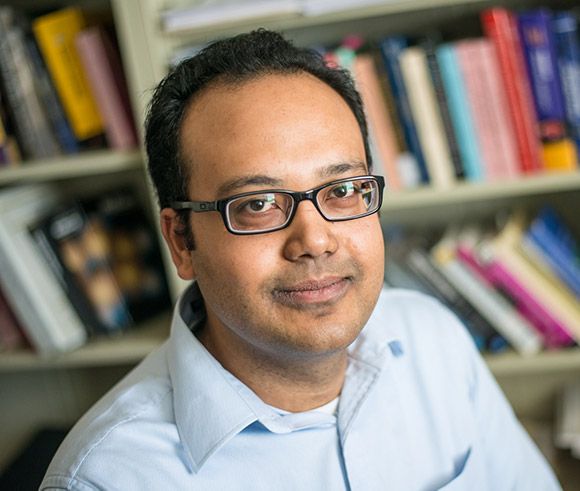Technology is getting smaller―which is good news.
The ability to fabricate materials with optical, electrical, and mechanical properties out of very small particles could have far-reaching applications. For example, micro-particles grafted with DNA can be used in medicine for better sensing, imaging, and treatment delivery. An improved understanding of how these materials behave could lead to fulfilling the promise of precision medicine, among other applications.
There is still much to learn about how best to direct the fabrication of these micro-materials. The self-assembly process of DNA-functionalized micro-sized particles leads to crystallization, i.e., atoms and molecules transforming into a highly structured form called a crystal. Crystallization begins with nucleation―the process by which atoms or molecules cluster together on the microscopic scale. If the clusters become stable and large enough, crystal growth may occur. Atoms and compounds can generally form more than one crystal structure, called polymorphism. The arrangement of particles is determined during the early stages of crystallization.
According to Jeetain Mittal, professor of chemical and biomolecular engineering, structural transformations that involve the potential for polymorphism during crystallization have conventionally been attributed to kinetic effects, or the rate of nucleation, to predict what structures may be observed when crystals form. This is line with classical nucleation theory.
Now, Mittal and his team have shown that kinetic effects may be unable to fully explain structural transformation in all polymorphic situations, and that surface thermodynamics―related to crystallite size as opposed to rate―can be critical for driving transformations between crystal structures. The team found a new pathway for structural transformation from square to hexagonal lattice during crystal growth which is thermodynamically-driven.
In many previous systems, according to Mittal, the crystallites exhibiting structural polymorphism have been attributed to kinetic effects, related to nucleation rate. In their work, Mittal and his collaborators provide solid calculation to demonstrate the structural transformation can be entirely thermodynamic, in contrast to the kinetic argument, from both theoretical and computational perspectives. Further, a similar structural transformation is observed in a more detailed modeled system using a coarse grain model representing DNA functionalized particle. This is strong evidence that such structural transformations can be much more general and can be connected back to more realistic systems.
“Understanding the crystallization process is especially important for controlling and predicting the structure produced,” says Runfang Mao, a current Lehigh PhD student and co-author on the paper. “Though useful in many cases, classical nucleation theory is understood to be invalid in many systems. We show that such size-dependent structural transformation is one of those exceptions, and that it is driven by thermodynamic properties of finite-sized crystallites. To our knowledge, such size-dependent structural transformation has not been clearly illustrated elsewhere in the literature.”
Their findings have recently been published in Science Advances in the article “Size-dependent thermodynamic structural selection in colloidal crystallization.” In addition to Mittal and Mao, authors include Evan Pretti, Hasan Zerze, Minseok Song and Yajun Ding―all current or former students in Lehigh’s P.C. Rossin College of Engineering and Applied Science.
Read the full story in the Lehigh University News Center
Story by Lori Friedman

